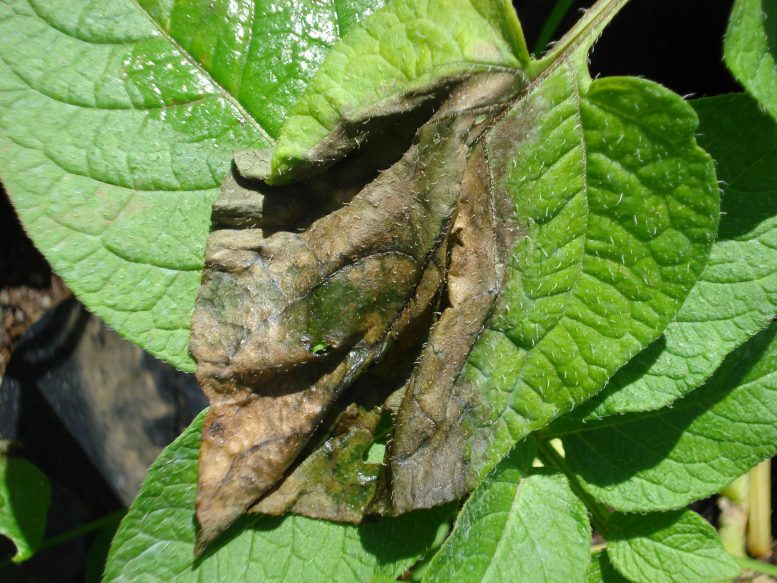
New research maps the spread of potato blight in the USA between 1843 and 1845, uncovering the disease’s early impact and the mid-19th century’s responses to it, including theories of its cause and proposed treatments. Credit: SciTechDaily.com
Early mapping of potato blight in the USA offers insights into the disease’s initial spread and contemporary theories on its causes and remedies before reaching Europe.
The first accurate maps of outbreaks of potato blight — a disease caused by the fungus-like pathogen Phytophthora infestans that was responsible for the Irish potato famine between 1845 and 1852 — in the USA between 1843 and 1845 are presented in a study published on February 15 in the journal Scientific Reports. The findings improve our understanding of the spread of potato blight before the disease reached Europe.
Tracing the Pathogen’s Journey
Jean Ristaino and colleagues mapped outbreaks of potato blight in North America between 1843 and 1845 by analyzing historic agricultural reports published in the USA during this period.
The researchers found that the disease was first reported in 1843 in five locations in the states of New York, Pennsylvania, New Jersey, Delaware, and Connecticut. By the end of 1844 the disease had spread to 107 additional locations, a further six US states (Ohio, Massachusetts, Rhode Island, Vermont, New Hampshire, and Maine) and the Canadian province of Nova Scotia.
In 1845 the disease spread to 53 new locations, including in four additional US states (Michigan, Illinois, Indiana, Maryland) and the Canadian province of New Brunswick. Contemporary reports suggested that the disease led to crop losses of between 33 and 50%.
Historical Perspectives on Disease Causes and Treatments
The researchers also used their approach to characterize historical theories on the source of potato blight and remedies for treating the disease between 1843 and 1845. Proposed causes of the disease during this period included insects, weather conditions, poor quality potato varieties, and a fungus.
In addition, the scientists identified a widely described debate in reports about whether the fungus was the cause or a consequence of the disease. Suggested treatments for the disease included calcium oxide (known as lime), sulfur, copper sulfate (known as bluestone copper), and salt. Infected imported potato seed tubers from locations including Nova Scotia, France, and Bogota, Colombia were suspected as sources of the disease.
Together, the findings provide insight into the spread of potato blight in the USA and into public understanding of disease in the mid-19th century.
For more on this research, see Mapping Plant Disease Spread With Historical Texts and Modern Tweets.
Reference: “Reconstructing historic and modern potato late blight outbreaks using text analytics” by Ariel Saffer, Laura Tateosian, Amanda C. Saville, Yi-Peng Yang and Jean B Ristaino, 15 February 2024, Scientific Reports.
DOI: 10.1038/s41598-024-52870-2










Be the first to comment on "The Silent Spread of Potato Blight in America Before the Irish Potato Famine"